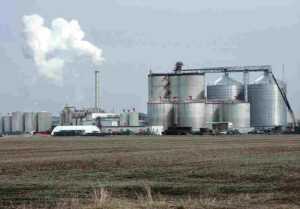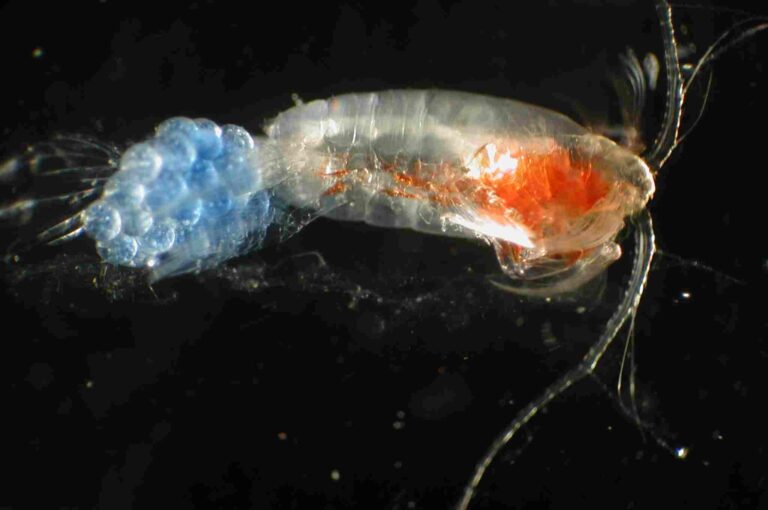5 Examples of Renewable Fuels
Examples of renewable fuels are; ethanol, methanol, hydrogen, methane, and dimethyl ether.
This article discusses the examples of renewable fuels, as follows;
1). Ethanol (as one of the Examples of Renewable Fuels)
Ethanol is a very common renewable fuel, with chemical formula of C2H5OH [2].
Its sources are mainly starchy plant biomass like sugarcane, hemp and corn [7].
The most used biomass conversion method for transforming these raw materials to ethanol is anaerobic digestion.
To emphasize the organic origin of ethanol that is derived from biomass conversion, it could be described as bioethanol.
For practical purposes ethanol is generally low in energy density and efficiency, for several applications. As a result, it is common to find it in combination with other fuels, as a supportive volumetric component.
In the United States, it is estimated that above 98% of all gasoline contains ethanol [1].
Uses of ethanol as a renewable fuel include electricity generation and transport. Some hybrid vehicles and others with re-designed internal combustion engines, have been developed to depend on ethanol as a source of energy.

2). Methanol
Methanol, also referred to as ‘wood alcohol’, is a renewable fuel with chemical formula of CH3OH [5].
Its most common application is in transport, where it was used notably during the late twentieth century. Other uses of methanol include plastic manufacturing.
In spite of its prospects as a transport fuel, methanol is not competitive with regards to other transport fuels, due to the cost of its production, and its relatively-low energy density.
However, it is considered as an applicable option in the efforts toward energy transition and the use of alternatives.
3). Hydrogen (as one of the Examples of Renewable Fuels)
Hydrogen as a renewable fuel can be isolated from biomass, fossil fuels, nuclear fuels and other sources.
However, green hydrogen fuel is commonly derived from the electrolysis of water [6].
It is called ‘green’ or ‘clean’ because the extraction process usually involves little to no greenhouse emission.
Other renewable energy sources like solar and wind can be used to power the electrolytic cell that generates hydrogen fuel.
Liquefaction of gaseous hydrogen under cryogenic conditions leads to the formation of liquid hydrogen; which is a more common and usable form of hydrogen fuel.
However, the liquefaction process may require large amounts of electricity and could cause some emissions.
Water which is used to produce hydrogen fuel, may itself be seen as a renewable fuel due to its role in hydroelectricity generation.
The applications of hydrogen fuel range from spacecrafts to fuel cells and hybrid cars.
4). Methane
Methane can also be produced by electrolytic processes, which could be powered by renewable energy [3].
Naturally, the gas is produced during the biodegradation of organic matter, and there are multiple engineered processes which can produce it; including pyrolysis, anaerobic digestion, and gasification.
Terms used in referring to methane from organic sources include biomethane, biogas, and renewable natural gas (RNG).
Methane as a renewable fuel, has shown high potential in terms of its performance for both power generation and transport. However, being a greenhouse gas itself, methane is not an ideal option where environmental sustainability is a priority. It also releases carbon dioxide CO2; another greenhouse gas, as a byproduct of its combustion.
5). Dimethyl Ether (as one of the Examples of Renewable Fuels)
Dimethyl ether (DME) is an example of a renewable fuel derived from coal, natural gas and a variety of other materials. It can also be produced by the hydrogenation of carbon dioxide CO2 [4].
One of the advantages of dimethyl ether is its performance, which exceeds that of most other renewable fuels in terms of energy efficiency and density.
DME can be used in combustion engines with barely any modifications to either the fuel or the combustion mechanism.
It is also a good alternative with regards to mitigating environmental degradation, and is known to release only negligible amounts of gaseous emissions.
Conclusion
Examples of renewable fuels are;
1. Ethanol
2. Methanol
3. Hydrogen
4. Methane
5. Dimethyl Ether
References
1). AFDC (2022). “Ethanol Fuel Basics.” Available at: https://afdc.energy.gov/fuels/ethanol_fuel_basics.html. (Accessed 31 October 2022).
2). Bhatt, A.; Balki, B.; Bhange, V. (2017). “Overview of Current prospective, potential issues and future prospects of ethanol production from various substrate.“ Terre Youth Conference, Pune. Available at: https://www.researchgate.net/publication/321153409_Overview_of_Current_prospective_potential_issues_and_future_prospects_of_ethanol_production_from_various_substrate. (Accessed 31 October 2022).
3). Bhattacharya, S. P.; Biswas, S.; Kulkarni, A.; Giddey, S.; Nguyen, M. N. (2020). “A Review on Synthesis of Methane as a Pathway for Renewable Energy Storage With a Focus on Solid Oxide Electrolytic Cell-Based Processes.” Frontiers in Energy Research 8. Available at: https://doi.org/10.3389/fenrg.2020.570112. (Accessed 31 October 2022).
4). Catizzone, E.; Bonura, G.; Migliori, M.; Frusteri, F.; Giordano, G. (2017). “CO2 Recycling to Dimethyl Ether: State-of-the-Art and Perspectives.” Molecules 23(1):31. Available at: https://doi.org/10.3390/molecules23010031. (Accessed 31 October 2022).
5). Dalena, F.; Senatore, A.; Marino, A.; Basile, M.; Basile, A. (2018). “Methanol Production and Applications: An Overview.” Methanol (pp.3-28). Available at: https://doi.org/10.1016/B978-0-444-63903-5.00001-7. (Accessed 31 October 2022).
6). Kumar, S. S.; Vurimindi, H. (2019). “Hydrogen production by PEM water electrolysis – A review.” Materials Science for Energy Technologies 2:442–454. Available at: https://doi.org/10.1016/j.mset.2019.03.002. (Accessed 31 October 2022).
7). Mojovic, L.; Pejin, D.; Grujić, O.; Sinisa, M.; Pejin, J.; Rakin, M.; Vukasinovic, M.; Poligenis, S. N.; Savic, D. (2009). “Progress in the production of bioethanol on starch-based feedstock.” Chemical Industry and Chemical Engineering Quarterly 15(4):211-226. Available at: https://doi.org/10.2298/CICEQ0904211M. (Accessed 31 October 2022).



